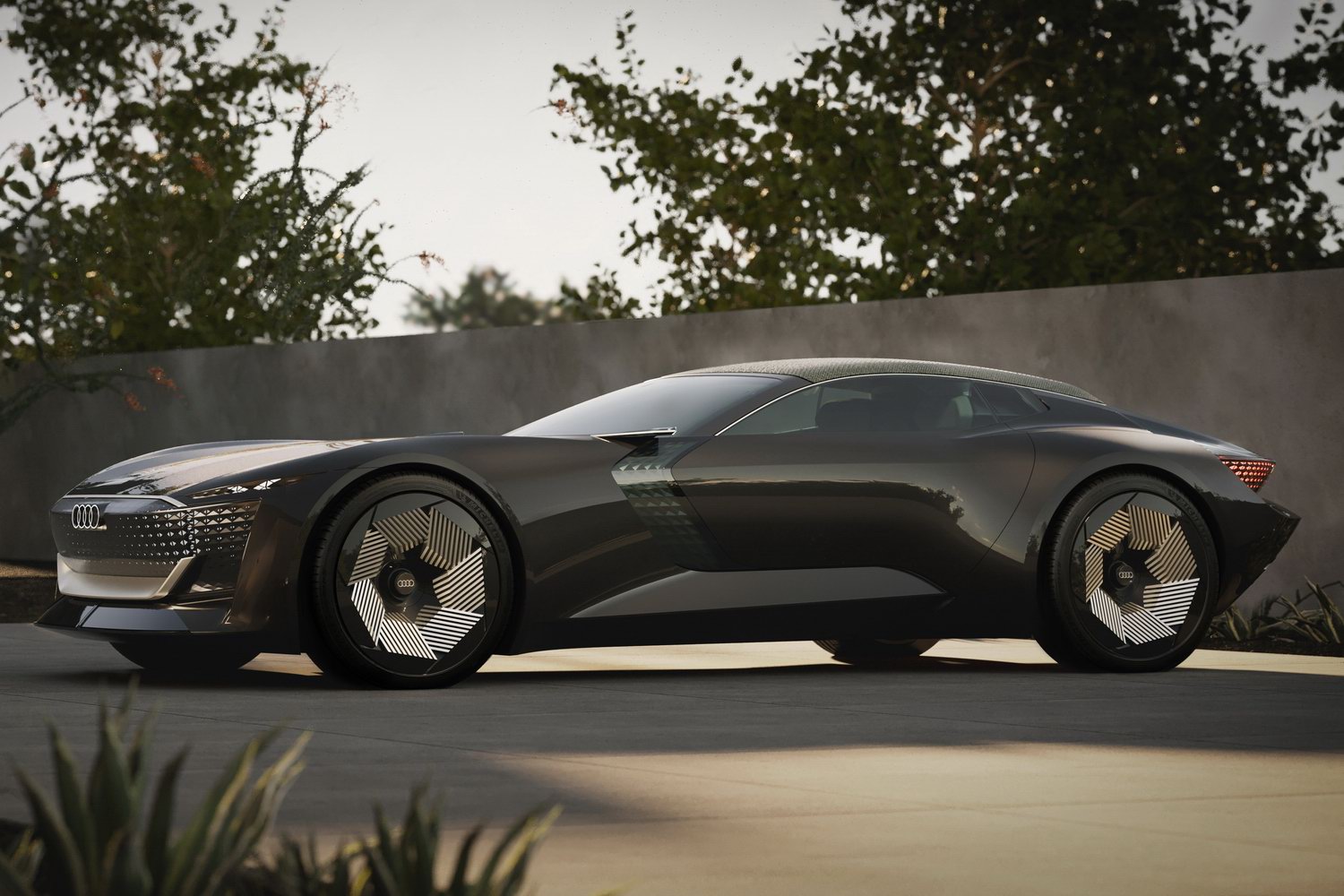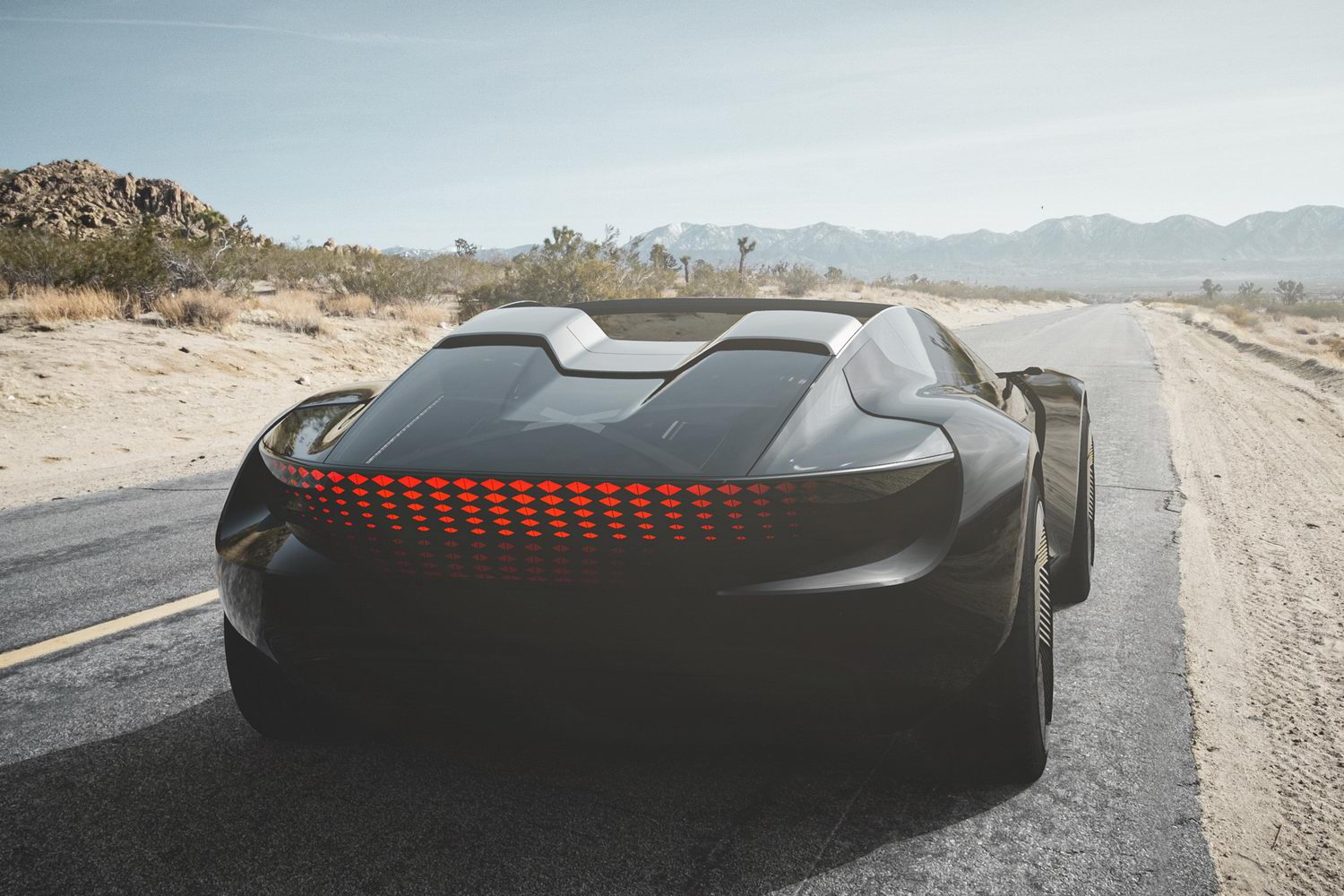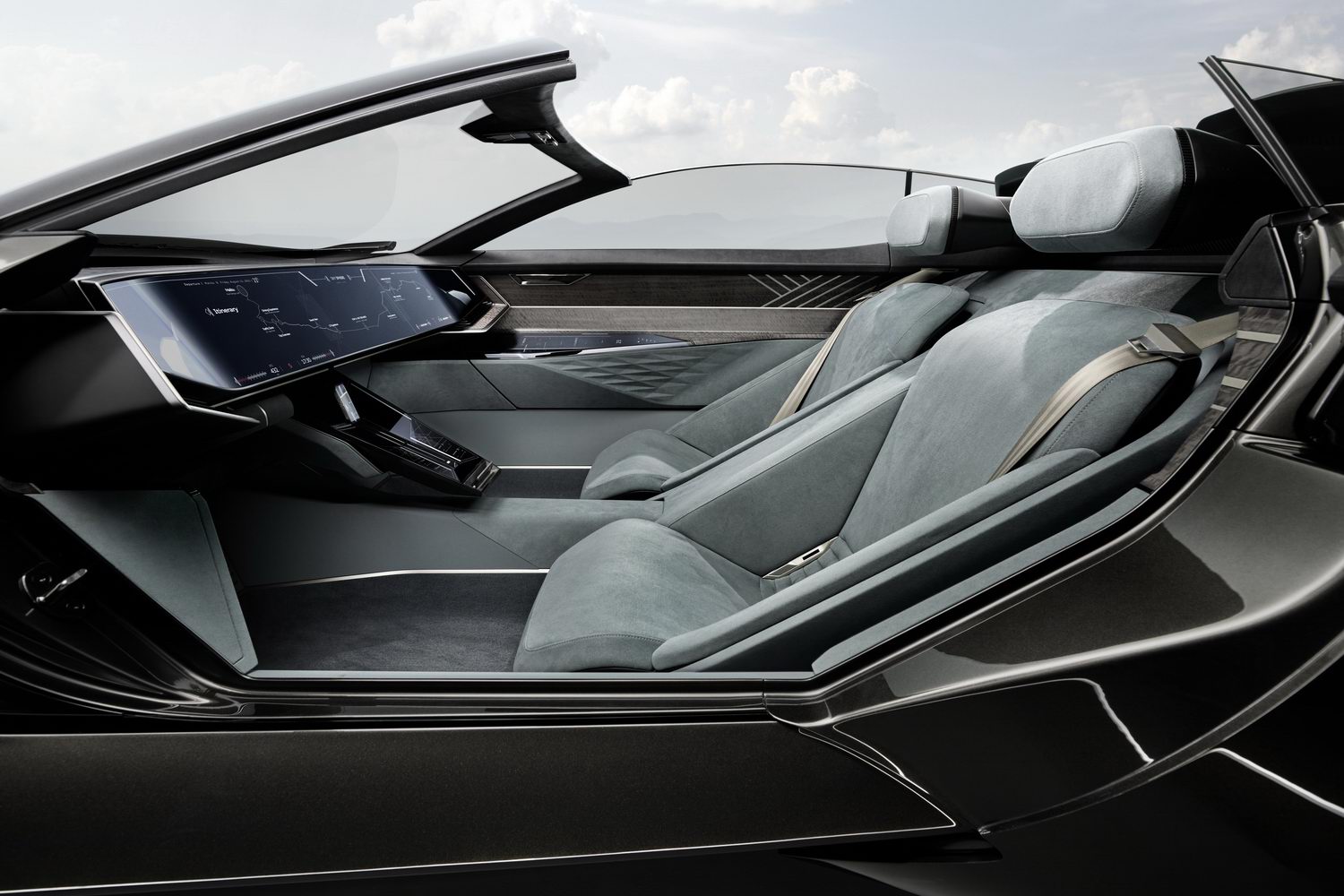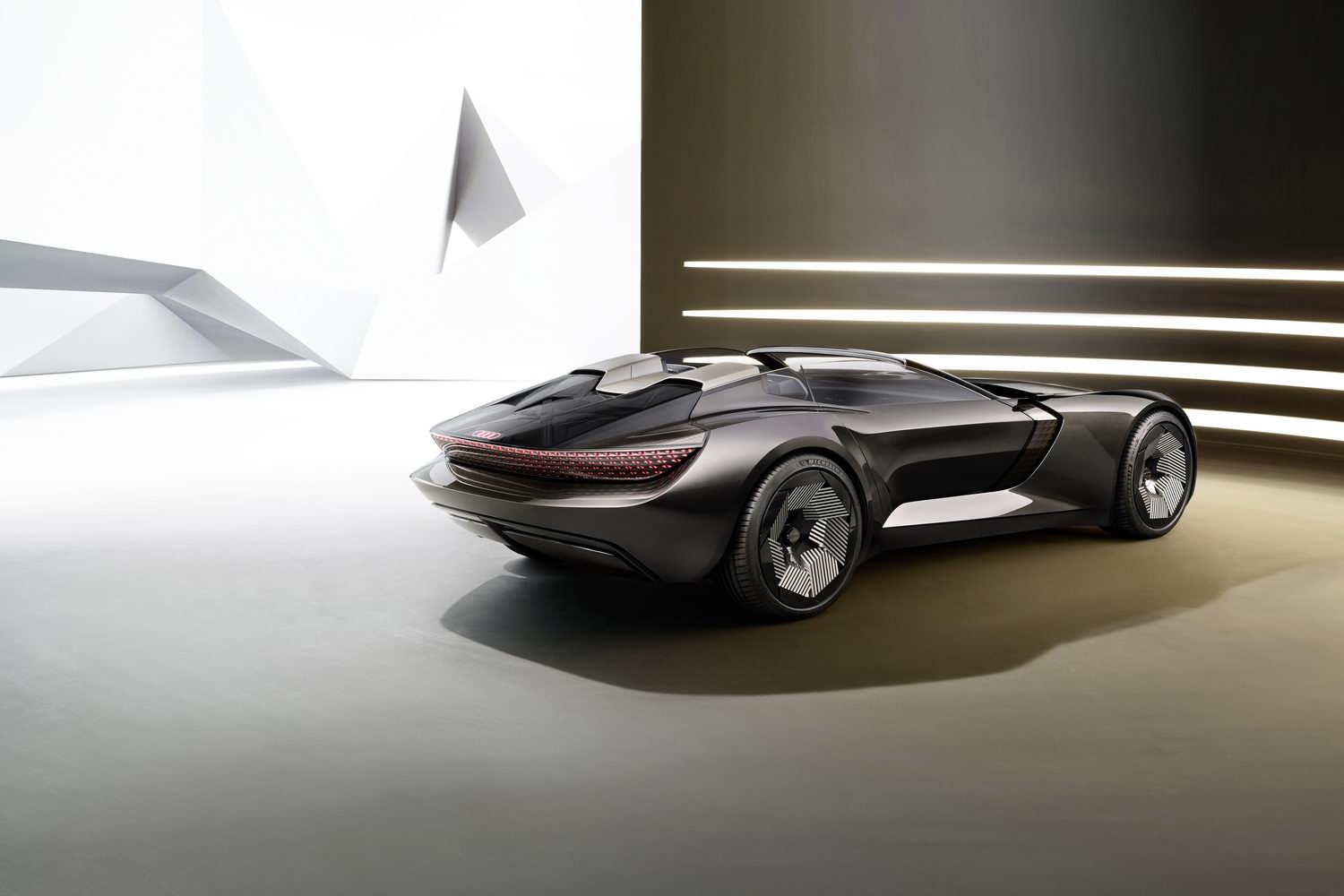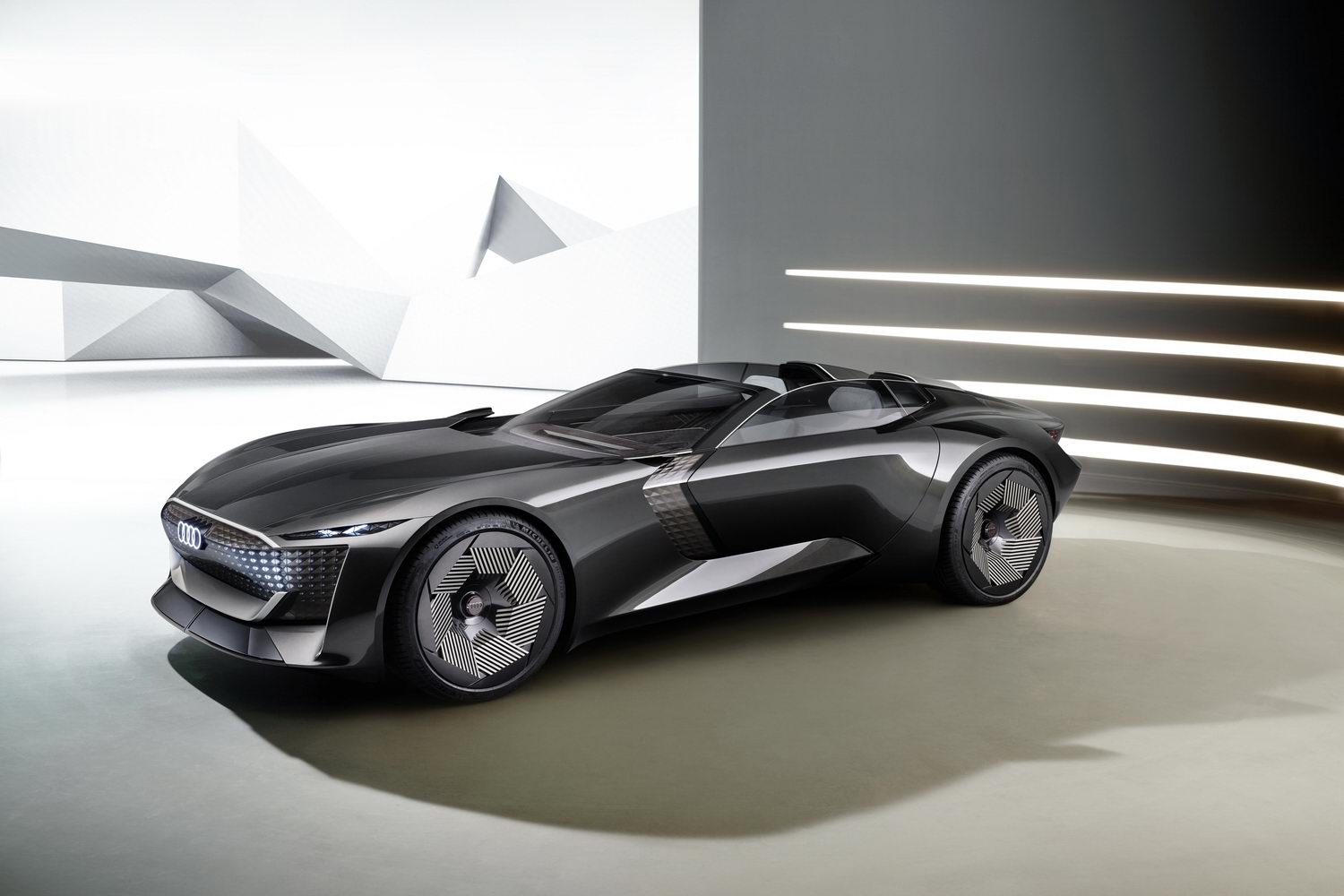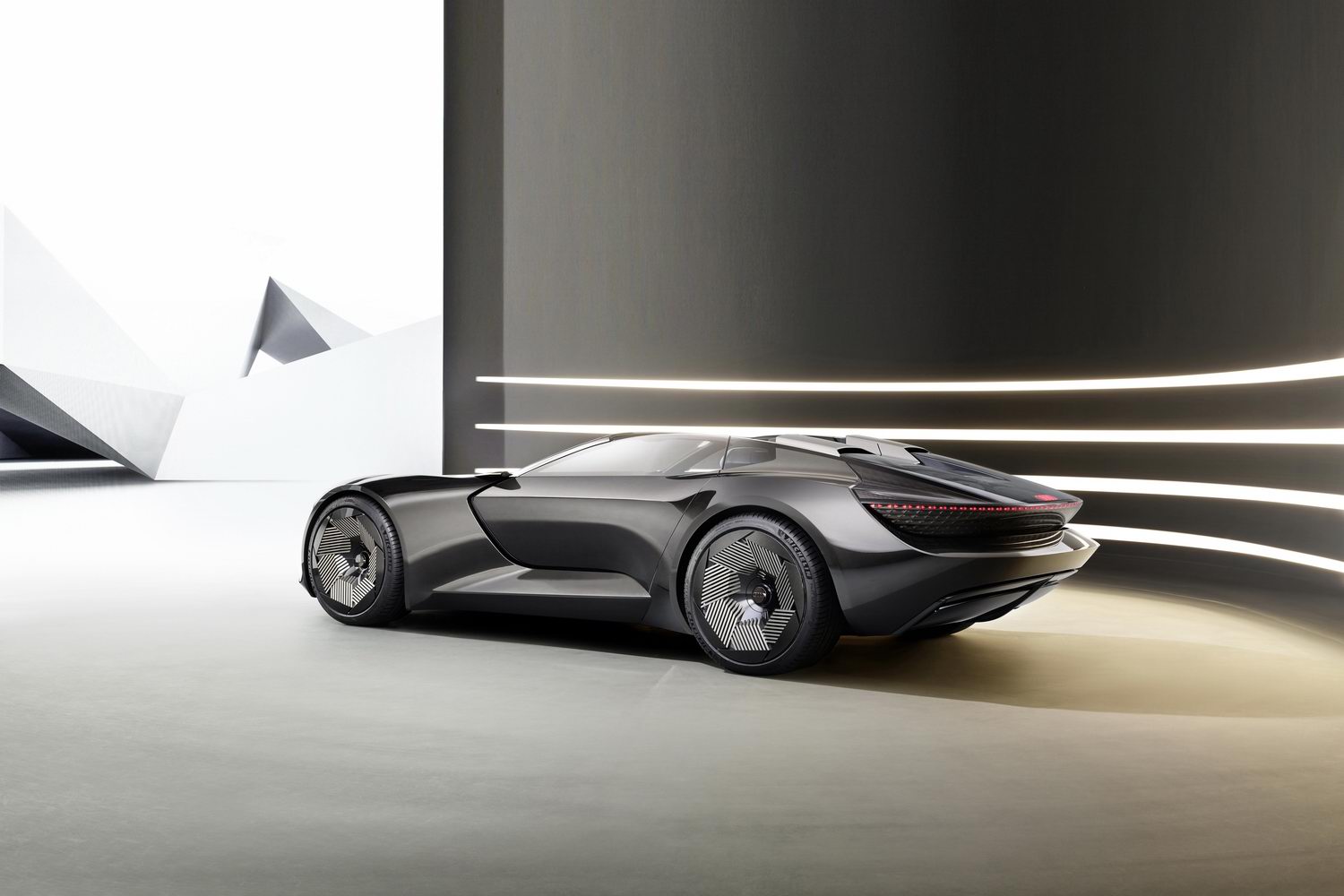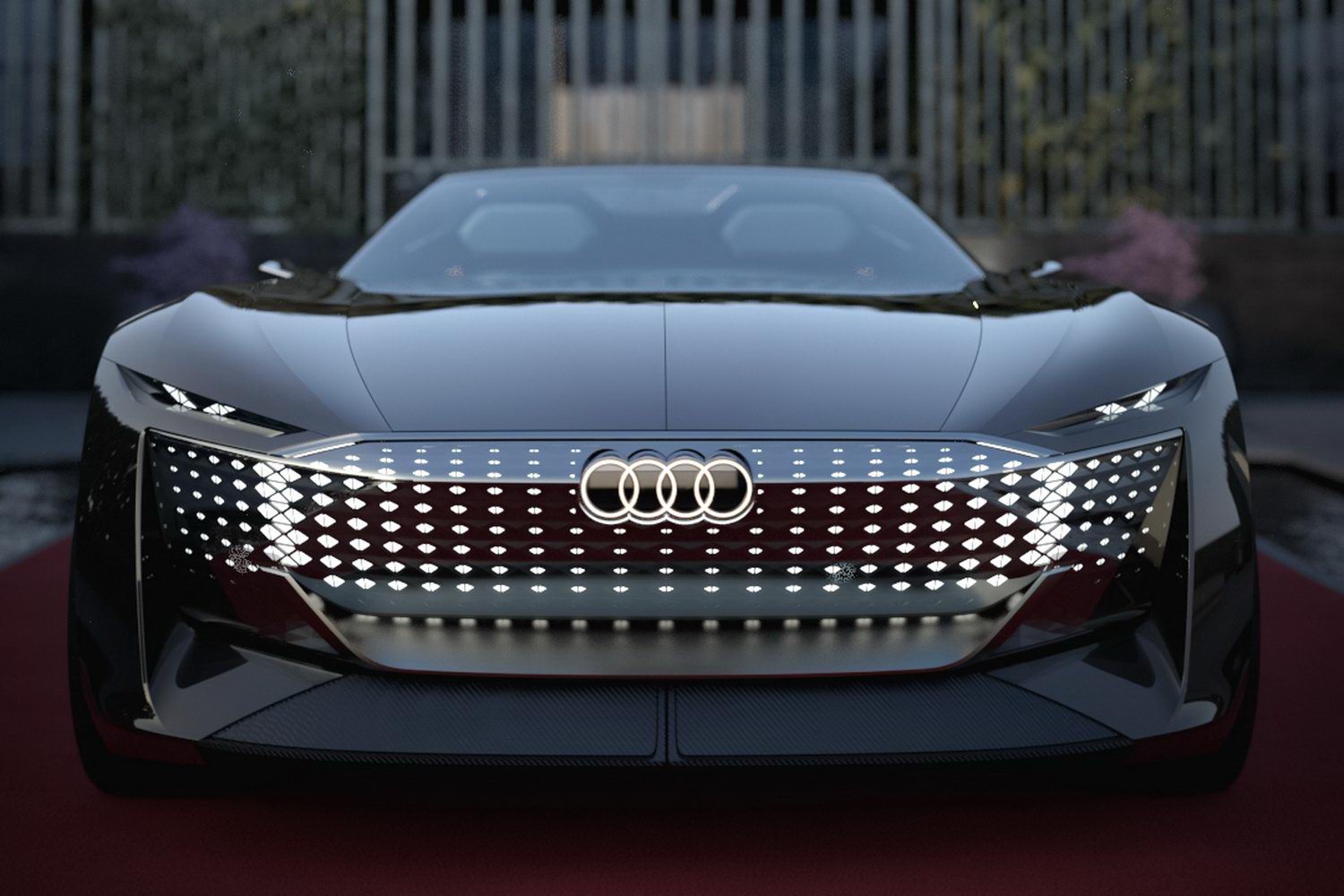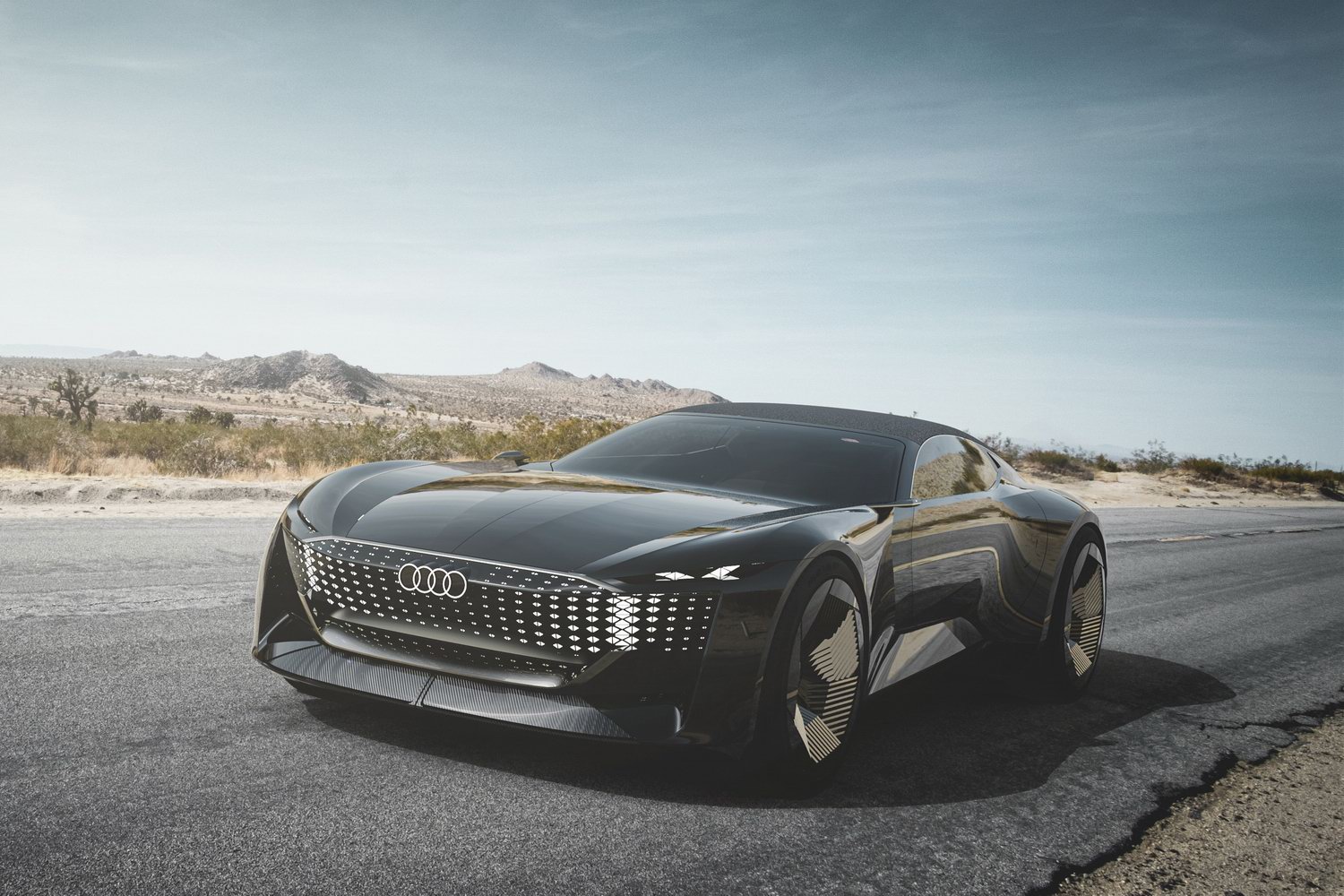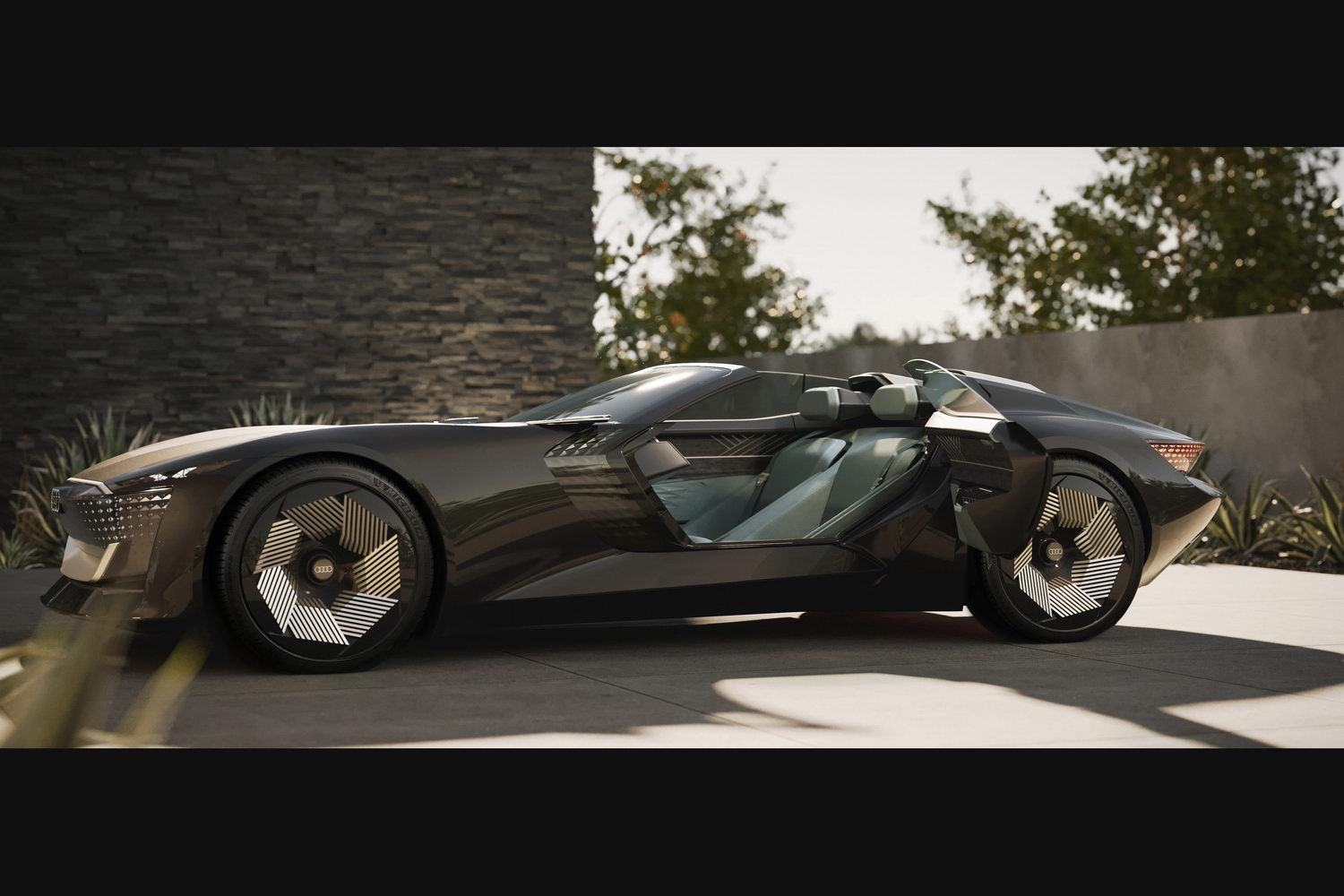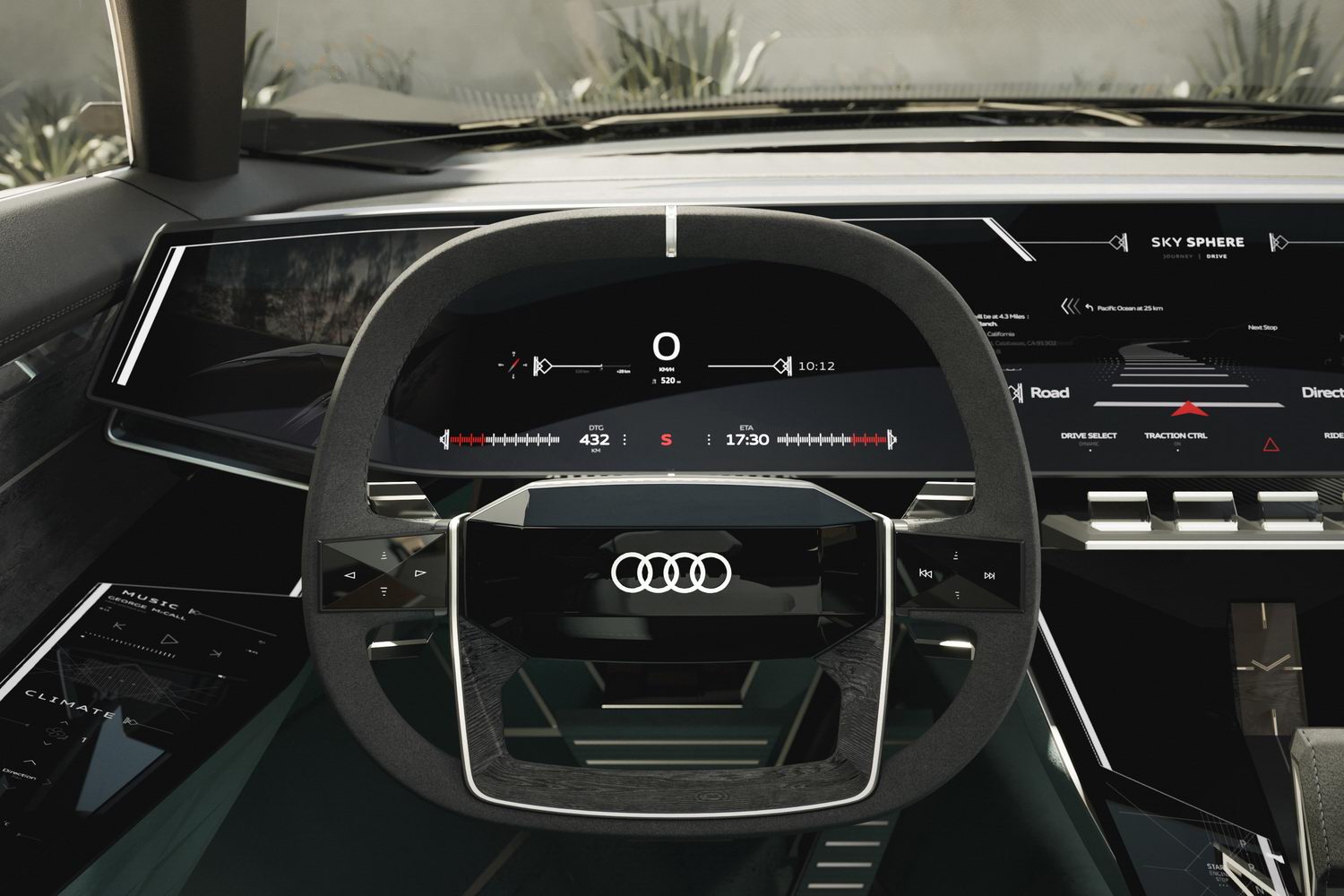This week, the Audi Skysphere concept debuts at Monterey Car Week and hints at where the future of car interiors may lie for the German brand. This dramatic two-seat roadster draws inspiration from the Horch 853 from the 1930s, a car that won the 'Best of Show' at the Pebble Beach Concours d'Elegance in 2009.
Measuring 4.94 metres in length, the Skysphere has a noticeably cab-rearward design with the occupants almost sitting on the rear axle. It rides on massive 23-inch wheels. It is a striking design created entirely in digital form by Audi's design studio in Malibu. This digital approach made the process faster and enabled the US team to collaborate in real-time with Audi's main design office in Ingolstadt in Germany.
The grille is no longer a grille in the traditional sense on account of the concept being electric. It advances the signature Audi design and is entirely illuminated, using that lighting to signify the car's driving modes. Its long bonnet doesn't cover an engine but instead features a large luggage are that can carry two golf bags that have been designed especially for the car.
The open-top design is sleek, with a raked windscreen and slender glass area. Rear-hinged doors provide easy ingress to the cabin, which we'll come back to. Behind the seats is a sloping rear deck with a glass cover that reveals space for two weekend bags to stow in the car's second luggage area.
Rather than a folding roof mechanism, the Skysphere uses a roof panel that fixes in place when conditions become inclement - this is a car meant to be enjoyed with the roof off; hence the name. An expansive lighting unit wraps across the car's rear, made up of over 200 elements.
Audi Skysphere has 500-kilometre range
At the core of the Skysphere is an 80kWh battery that Audi claims is sufficient for a driving range of up to 500 kilometres. The battery modules are placed in the rear and between the seats where a traditional transmission tunnel would exist despite, what the car's profile might suggest. Total outputs of 465kW (632hp) and 750Nm is sent to the rear wheels and is enough to propel the 1,800kg Skysphere from 0-100km/h in four seconds.
In its default Sports mode, the driver is in complete control and the car is mechanically optimised to deliver an involving driving experience. For the Skysphere, Audi uses a steer-by-wire steering setup enabling the driver to select different steering ratios at the touch of a button. The concept also uses four-wheel steering, where the rear wheels can turn opposite the fronts, reducing the turning circle.
The Skysphere also uses an adaptive air suspension setup that can reduce the car's ride height by 10mm to reduce drag over longer journeys, thus improving range. The three-chamber suspension is also capable of adjusting for pitch, roll and stiffness on the move.
One of the car's party pieces is that its length can increase by 250 millimetres when it switches to Grand Touring mode, similar to the Renault Morphoz concept. The car's front section slides forward to increase the wheelbase to match that of an Audi A8 L. When the Gran Touring mode is selected, the steering wheel tilts forward by 90 degrees and retracts into the dashboard as it moves away from the driver, while the pedals move into a hidden area to maximise legroom.
This mode is the car's autonomous setup, whereby it takes over all of the driving and leaves its passengers to enjoy a larger cabin space.
Minimalist cabin design for the Audi Skysphere
One of the standout features of the Skysphere cabin is the extensive digital dashboard. Measuring 1,415mm wide and 180mm high, it offers a detailed display for both driver and passenger. The concept car shows the entire journey mapped out across the dash in addition to the usual driving information.
A smaller screen on the passenger side has individual controls for infotainment and climate functions.
When the car is in its fully autonomous GT mode, other controls on the centre console vanish from sight with the steering wheel.
The seats are upholstered in a sustainably produced microfibre material and are claimed to offer the kind of adjustability and comfort found when flying in a First Class cabin. Other materials in the cabin include environmentally certified eucalyptus wood and synthetically produced imitation leather.
Audi has been churning out concept cars over recent years and while some have been pure flights of fancy, such as the AI:TRAIL quattro, these design studies often preview elements of what may come in future production models. The use of more environmentally friendly materials is something that Audi is already doing in series production, and the huge display dashboard could make its way into a future flagship model. Interestingly, one of the models missing from the Audi line-up is a GT roadster in the same vein as the Mercedes-Benz SL...

